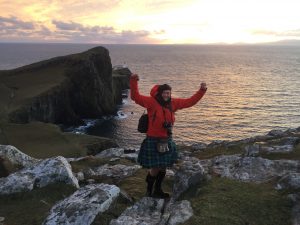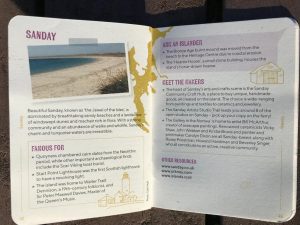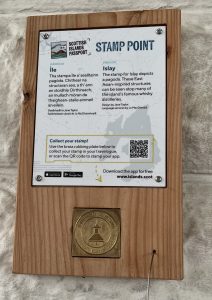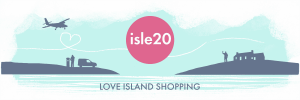By Robin McKelvie
Much of our world today is dominated by retail hegemony and the mass-produced. We tend to slog through most of our shopping in supermarkets or giant stores that are often run by faceless multinational companies. The traditional lines that weave us into goods and products have been severed; we’ve become collectively divorced from the stories behind the things we buy. That is where Scottish Islands Passport’s ‘Meet the Makers’ travelogue comes in. It helps you connect to the people and communities who create; to re-establish those links and to bring them to life in a way that enriches your explorations of Scotland’s wondrous isles.

I like that Scottish Islands Passport take an innovative themed approach. They think outside traditional geographical groupings and want you and I to get more curious about islands around Scotland’s north and west, breaking stereotypes and assumptions about how they might be just because they are close to another islands that might be well known. I totally get this. If you visit Skye and then set off for the Small Isles expecting Rum, Eigg, Muck and Canna to be identical miniature versions of Skye then you are in for a massive surprise.
Going for the less obvious options can also mean the less obvious aspects of islands that we may – perhaps unconsciously – tend to pigeon-hole. So for example you might have Islay in your head fixed as the island of whisky, fair enough given it now has more than a dozen distilleries. Scottish Islands Passport are not saying don’t go for the whisky; just when you do go your experience will be richer if you break away from the crowds and explore other less obvious avenues. They are not saying those well branded identities don’t exist or aren’t true, but it’s more about introducing islands as unique, individual, multifaceted places of interest with rich and diverse cultures and economies.
So on Islay we are talking Persabus Pottery, where you get the chance to get hands-on, participating in workshops on painting and pottery. You will leave with a thoroughly unique souvenir you have had a real hand in creating. There is jewellery designer Charlotte Hannett and the weavers at Islay Woollen Mill, who work with traditional tartans and tweeds. I had forgotten about the twice-weekly crafts sales at Bruichladdich Hall, which features local artists. The latter is shameful as I’ve actually got a painting of Loch Indaal I bought from an artist here. Meet the Makers reminded me of that and I’ve made a mental note to head back next time I’m over.

I’m looking through the Meet the Makers travelogue as I write this and it’s getting my synapses popping, with both memories of places I’ve been to and others I now am determined to get to. I love Burra Bears on Shetland, the original Shetland teddy bears – my daughters have one each in their rooms. I didn’t know about nearby Trowie Knowe Crafts, Design by Deborah and Red Houss Shetland. All this on one wildly beautiful archipelago!
Big and small comes into it too with Meet the Makers. I’m as guilty as many people are of generally framing the islands between the big hitters versus the small and niche islands. In Meet the Makers they cover the obvious world-famous delights of Harris Tweed, but we can also then delve back across the Minch to some home-based workshops on the community-owned island of Eigg and explore the honesty shops of neighbouring Rum. Scottish Islands Passport like to celebrate both and want to share that same appreciation that bigger doesn’t mean better and that there is space in the world for both.
The actual guide is really handy. It is purposely pocket-sized so you can easily take it with you on a trip. It looks great too – I showed it to my 11-year-old daughter Emma and her wee magpie eyes lit up and she instantly wanted to keep it. We looked through it together and it really worked. She recognised islands we have been to and experiences she had enjoyed, but then also asked me why we hadn’t done things like go to very single stop on the Arran Art Trail! I can feel a very busy return to Arran on the cards. I might even surprise my girls and take them over for Arran Open Studios, which delves even deeper into this seriously creative Scottish island.

The Meet the Makers travelogue also has space to curate your own memories and collect stamps of the islands so it’s a real keepsake and souvenir. It is not meant to be a full blown guidebook, but, like the Scottish Islands Passport App, it is more than enough to whet the appetite, and is helpful and fun, introducing you to those elusive ‘hidden gems’ of travel writing cliche. I can confirm they do actually exist in the Scottish isles. I found using the App in conjunction with the Meet the Makers travelogue worked really well.
Then, of course, there are the rubbing stamps. It’s great news that all the physical rubbing stamps for Meet the Makers are installed for all the 20 islands covered in this edition. A few more are in place on other islands, with the rest in progress. Scottish Islands Passport place the stamps working with local community organisations to identify good locations and then they pay them – or another local organisation – to ‘host’ the stamp, helping to give something back to communities.
When you are inspired to visit and buy from the small-scale independent producers listed in Meet the Makers you are giving back too. You are spending money in a local community direct with a creative producer, with no middle man involved. And you are being sustainable too as you are buying in the island you’re on, not incurring any postal costs.
It couldn’t be easier to snare your own Meet the Makers travelogue. It’s on sale now at Isle20 – https://www.isle20.com/market/scottish-islands-passport/. Scottish Islands Passport are also building relationships with island retailers too, so check here for where else you can buy this essential travelogue for visiting the myriad islands of Scotland’s west and north coast https://islands.scot/the-passport/. What are you waiting for?



